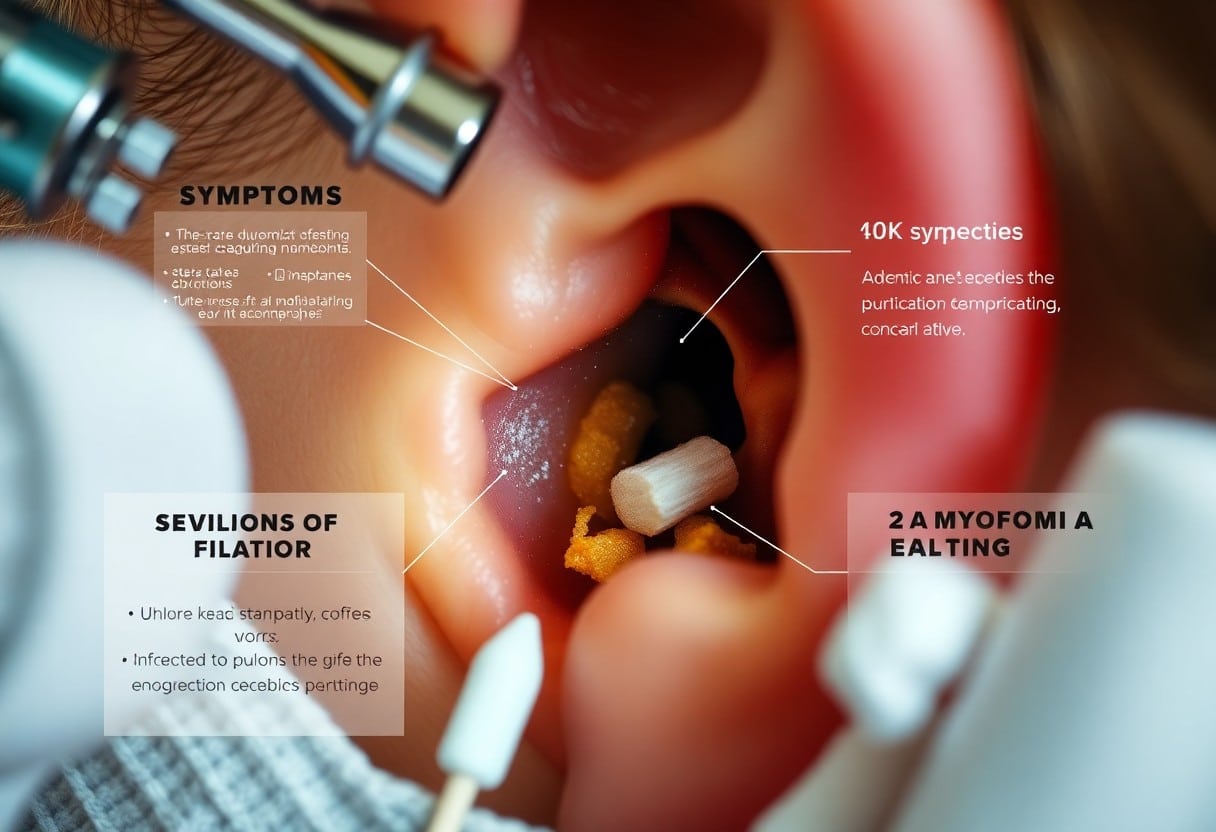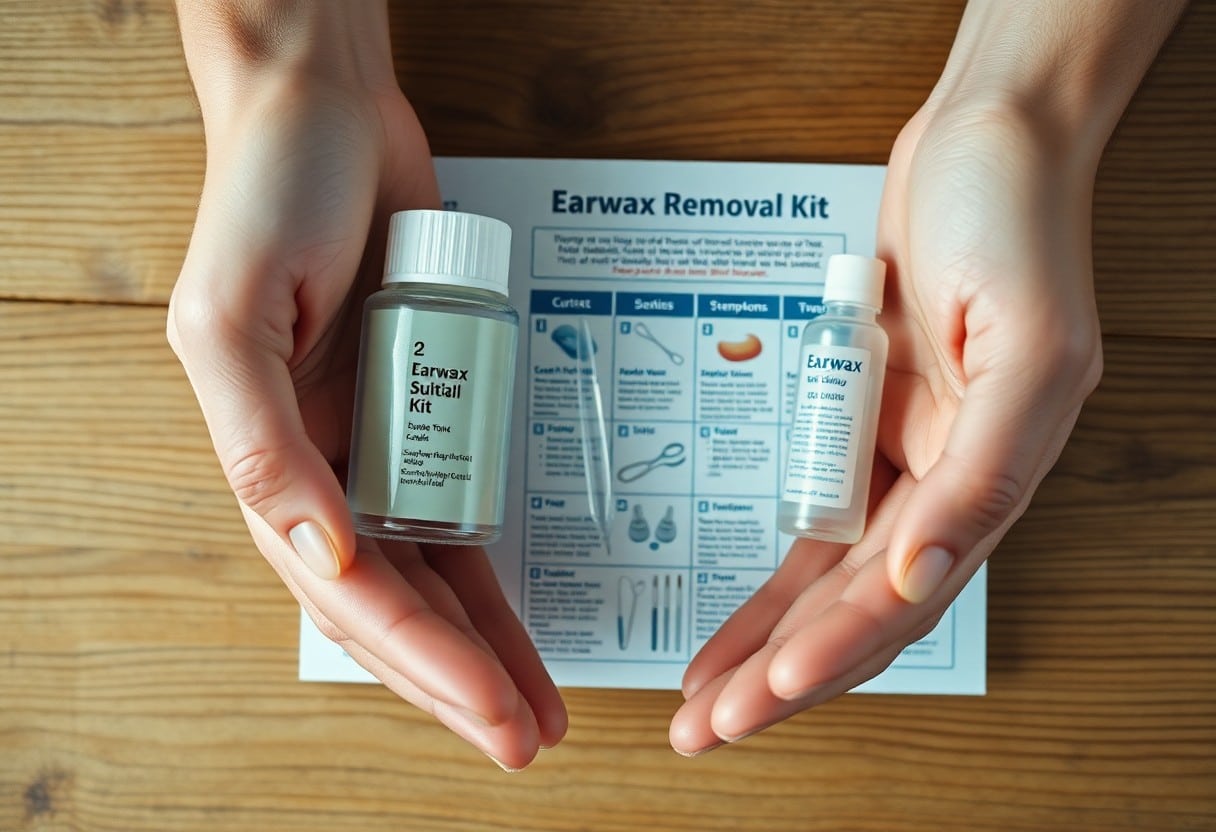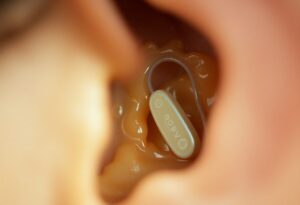Blockage in your ears from excess earwax can lead to discomfort, hearing issues, and even infections. Understanding the signs of buildup, the causes behind it, and effective solutions is necessary for maintaining your ear health. In this guide, you will learn how to identify when earwax is a problem, what factors contribute to its accumulation, and practical steps to resolve any blockage you may experience.
Key Takeaways:
- Common signs of earwax buildup include hearing loss, earache, and a sensation of fullness in the ear.
- Causes of blockage may include improper cleaning, skin conditions, and excessive earwax production.
- Solutions include professional cleaning by a healthcare provider, over-the-counter drops, or at-home remedies, but avoid inserting objects into the ear.
The Anatomy of Earwax and Its Purpose
The Composition of Earwax
Earwax, or cerumen, consists of a mixture of fatty substances, dead skin cells, and secretions from glands in the ear canal. Approximately 20% of its composition is made up of lipids, while proteins and waxy compounds create its thick, sticky texture. This unique mixture aids in capturing debris and prevents dust and microorganisms from reaching the eardrum, serving as a barrier for your delicate inner ear.
The Role of Earwax in Ear Health
Earwax plays a vital role in maintaining your ear health by naturally cleaning, lubricating, and protecting the ear canal. It traps dust, dirt, and microorganisms, reducing the risk of infections. Additionally, earwax helps to maintain balanced pH levels within the ear, preventing irritation and inflammation. Regular movement of the jaw, such as while talking or eating, naturally expels excess earwax, keeping your ears functioning optimally.

Red Flags: Recognizing Symptoms of Earwax Blockage
Common Physical Symptoms
Typical symptoms of earwax blockage include muffled hearing, earache, and a feeling of pressure or fullness in your ear. Additional signs may involve dizziness, itching in the ear canal, and occasionally even tinnitus, which presents as ringing or buzzing sounds. If you notice persistent drainage or unusual odor, these could signal infection necessitating prompt attention.
Mental and Emotional Impact of Blockage
Experiencing earwax blockage can significantly affect your mental and emotional well-being. The frustration of impaired hearing and constant discomfort often leads to increased stress and anxiety.
The psychological effects of earwax blockage extend beyond mere annoyance. Many individuals report feeling isolated or withdrawn, as communication becomes challenging. A 2018 study highlighted that people with hearing difficulties often experience heightened levels of fatigue and irritability, directly correlating to social interaction struggles. This emotional strain can ultimately impact your overall quality of life, making it vital to address earwax issues promptly.
The Culprits: Factors Leading to Excessive Earwax Production
- Genetics
- Environmental factors
- Lifestyle choices
- Health conditions
- Hygiene practices
Genetic Influences on Earwax Production
Your genetic makeup significantly influences how much earwax your body produces. If your parents or close relatives tend to have excessive earwax, there’s a chance you might inherit this trait. Genetic variations can lead to different types of earwax, either wet or dry, with wet cerumen typically resulting in higher amounts due to its composition.
Environmental and Lifestyle Factors
Environmental elements, such as humidity and exposure to irritants, can increase your earwax production. Additionally, lifestyle choices like frequent use of earbuds or hearing aids can push earwax further into the ear canal. Excess moisture from swimming or bathing can also prompt your body to compensate by producing more wax.
- Frequent swimming or exposure to moisture
- Use of cotton swabs or other aids
- Exposure to dust or pollutants
- High-stress levels
- Health issues affecting skin and ear health
Factors like stress levels and existing health conditions can affect not only your overall well-being but also the skin’s function in your ears. Conditions like eczema or psoriasis can lead to abnormal skin cell shedding, which may combine with earwax and increase blockage risks. After identifying these lifestyle triggers, you can take proactive steps to manage and mitigate their impacts.
- Maintaining appropriate ear hygiene
- Avoiding irritants
- Using protective ear coverings when in polluted areas
- Hydrating regularly
- Consulting healthcare providers for skin conditions
Establishing a balanced ear hygiene routine can significantly reduce excessive earwax accumulation. After making adjustments to your habits and considering environmental factors, you may notice improvements in your ear health and reduce the likelihood of blockages.
Demystifying Myths: Misconceptions About Earwax
Common Myths Debunked
Many misconceptions about earwax persist, such as the belief that it should always be removed for optimal ear health. While excessive buildup can lead to blockages, earwax serves a vital role in protecting your ear canal by trapping dust, debris, and microorganisms. In moderation, it is not harmful and does not require constant removal.
The Cultural Narrative Surrounding Ear Hygiene
The cultural focus on ear hygiene often emphasizes cleanliness at the expense of understanding earwax’s natural function. Many societies promote aggressive cleaning methods, leading to behaviors such as using cotton swabs, which can push wax deeper and exacerbate blockages. Consumers are bombarded with products advertising “clean” ears, causing confusion about the balance between hygiene and ear health.
Marketing strategies have shaped perceptions around ear hygiene for decades, creating an urgent narrative that associates cleanliness with health. This has resulted in a widespread belief that visible earwax is unappealing and undesirable. In turn, people may resort to over-cleansing, often leading to damage or irritation of the ear canal, rather than maintaining its natural balance. Educating yourself about the necessary functions of earwax can shift these narratives, fostering healthier ear care practices that harmonize with your body’s needs.

The Diagnostic Journey: How to Confirm Earwax Blockage
Self-Assessment Techniques
You can conduct a basic self-assessment by reflecting on any changes in your hearing or experiencing discomfort in your ears. Try gently pulling on your earlobe while tilting your head to see if this alters your hearing. A plugged sensation, along with persistent itching or a feeling of fullness, often signals a potential blockage. Keep an eye on the frequency and severity of these symptoms as they can provide important clues.
Professional Examination Procedures
A healthcare professional may employ various techniques to diagnose earwax blockage, including medical history review and a comprehensive examination using an otoscope. This instrument allows the clinician to visualize your ear canal and tympanic membrane clearly. They may also use specialized tools to assess the extent of the blockage and gauge fluid levels in the ear.
During the examination, the clinician may also inquire about your symptoms and any relevant history, such as past ear issues or cleaning habits, to tailor their approach. They might recommend imaging tests or audiological evaluations if the blockage affects your hearing significantly. In more complicated cases, an alternative analysis could involve suction or irrigation to evaluate earwax buildup directly, ensuring an accurate diagnosis and appropriate treatment plan.
Practical Solutions: Safe Removal Methods
At-Home Removal Techniques
For minor earwax buildup, at-home techniques can be effective. You can use a bulb syringe filled with warm water to gently flush your ear. Alternately, mineral oil, baby oil, or over-the-counter ear drops may help soften wax. Applying a few drops of these substances into your ear can lubricate the wax, making it easier to expel naturally. Always avoid using cotton swabs, which can push wax deeper into the ear canal.
Professional Ear Cleaning Options
If at-home methods don’t provide relief, seeking professional help is advisable. Ear, nose, and throat (ENT) specialists utilize various tools and techniques to safely remove impacted earwax. This not only eliminates blockage but also prevents potential damage to the ear canal or eardrum.
Professional cleaning options include microsuction, where a small suction device removes the wax under direct visualization, ensuring safety and effectiveness. Another method is irrigation, which involves flushing the ear with water or saline solution to dislodge and wash out the buildup. Both methods are typically quick and painless, with many providers offering appointments as needed for ongoing ear care, especially for individuals prone to excessive wax production.
Preventative Measures: Keeping Earwax Under Control
Hygiene Best Practices
Regular cleaning of your outer ear can help prevent earwax buildup. Use a damp washcloth to gently wipe the outer ear, avoiding insertion into the ear canal. Cotton swabs should be used with caution, as they can push wax deeper. Incorporate ear care into your regular hygiene routine, ensuring that moisture isn’t trapped inside your ears after bathing or swimming.
Dietary and Lifestyle Adjustments
Your diet and lifestyle can impact earwax production. Incorporating foods rich in omega-3 fatty acids, such as fish and flaxseeds, can promote healthy skin and may reduce excessive earwax. Staying hydrated and reducing caffeine and alcohol intake can also lessen wax buildup as dehydration can lead to thicker earwax consistency.
In addition to dietary adjustments, consider the effects of certain lifestyle habits. Regular exercise improves circulation and overall skin health, including in the ear area. Reducing exposure to irritants, such as smoke and allergens, can help minimize earwax production. Keeping stress levels in check also plays a role, as stress can influence bodily functions, including earwax secretion.
When to Seek Medical Attention: Recognizing Serious Issues
Potential Complications from Blocked Earwax
Blocked earwax can lead to several complications if left untreated, including hearing loss, tinnitus, or even ear infections. In more severe cases, the pressure from accumulated wax can cause damage to the eardrum or lead to conditions like labyrinthitis, which affects balance and coordination. Regularly seeking medical advice can mitigate these risks, ensuring that any buildup is addressed before complications arise.
Signs that Indicate Urgent Care
迅速行动是必要的,您如经历剧烈耳痛、持续听力下降、耳内流脓或血液、平衡问题,或伴有发烧等症状,尤其应立即寻求医疗帮助。这些症状可能暗示着更严重的健康问题,如感染或耳道破裂。
Severe ear pain that persists, sudden hearing loss, and dizziness can signal complications like a possible ear infection or a ruptured eardrum. If you notice fluid draining from your ear, particularly if it’s blood-stained or has a foul smell, seek immediate medical treatment. Such signs warrant professional evaluation to prevent lasting damage and ensure proper care.
To wrap up
Considering all points, understanding earwax buildup and blockage is vital for maintaining your ear health. You should be aware of the signs and causes, such as discomfort and hearing issues, which may indicate a blockage. Taking preventive measures and seeking solutions like professional cleaning can help you manage the situation effectively. By being proactive, you can ensure your ears remain clean and functional, ultimately enhancing your overall well-being.
FAQ
Q: What are the signs of earwax buildup?
A: Signs include muffled hearing, earache, a feeling of fullness in the ear, ringing in the ear, and sometimes dizziness or itching.
Q: What causes earwax blockage?
A: Causes include excessive earwax production, use of cotton swabs, wearing hearing aids or earbuds, and age-related changes in ear canal shape.
Q: How can I safely remove earwax buildup?
A: Safe removal methods include using over-the-counter ear drops, irrigation with a bulb syringe, or consulting a healthcare professional for removal with specialized tools.
Q: Are there risks associated with earwax blockage?
A: Risks include hearing loss, ear infections, discomfort, and potential damage to the ear canal or eardrum during improper removal attempts.
Q: How can I prevent earwax buildup in the future?
A: Prevention includes avoiding cotton swabs, regular ear cleaning with a gentle solution, and periodic check-ups with a healthcare provider for ear health.



